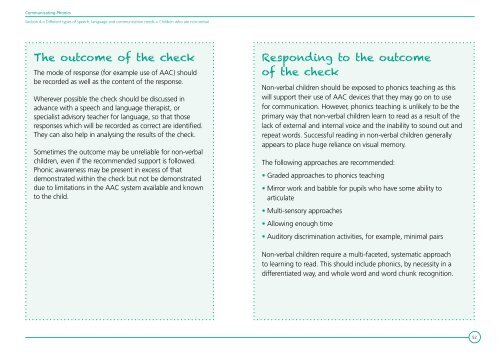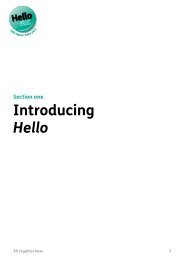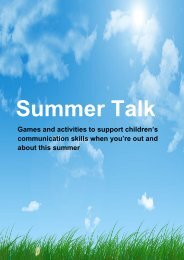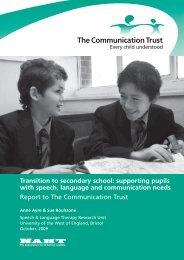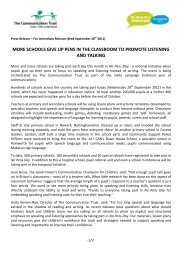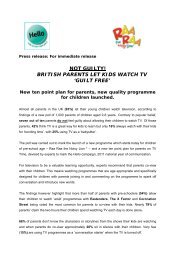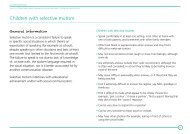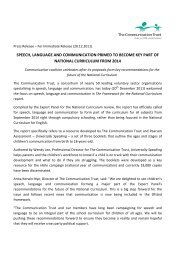Communicating Phonics - The Communication Trust
Communicating Phonics - The Communication Trust
Communicating Phonics - The Communication Trust
You also want an ePaper? Increase the reach of your titles
YUMPU automatically turns print PDFs into web optimized ePapers that Google loves.
<strong>Communicating</strong> <strong>Phonics</strong>Section 4 > Different types of speech, language and communication needs > Children who are non-verbal<strong>The</strong> outcome of the check<strong>The</strong> mode of response (for example use of AAC) shouldbe recorded as well as the content of the response.Wherever possible the check should be discussed inadvance with a speech and language therapist, orspecialist advisory teacher for language, so that thoseresponses which will be recorded as correct are identified.<strong>The</strong>y can also help in analysing the results of the check.Sometimes the outcome may be unreliable for non-verbalchildren, even if the recommended support is followed.Phonic awareness may be present in excess of thatdemonstrated within the check but not be demonstrateddue to limitations in the AAC system available and knownto the child.Responding to the outcomeof the checkNon-verbal children should be exposed to phonics teaching as thiswill support their use of AAC devices that they may go on to usefor communication. However, phonics teaching is unlikely to be theprimary way that non-verbal children learn to read as a result of thelack of external and internal voice and the inability to sound out andrepeat words. Successful reading in non-verbal children generallyappears to place huge reliance on visual memory.<strong>The</strong> following approaches are recommended:• Graded approaches to phonics teaching• Mirror work and babble for pupils who have some ability toarticulate• Multi-sensory approaches• Allowing enough time• Auditory discrimination activities, for example, minimal pairsNon-verbal children require a multi-faceted, systematic approachto learning to read. This should include phonics, by necessity in adifferentiated way, and whole word and word chunk recognition.52


